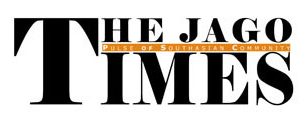Stockholm: The scientific community is holding its breath as the Nobel Prize in Physics is set to be announced at 11:45 am (0945 GMT) in Stockholm today. Speculation is high, with achievements spanning computer image compression, theoretical “invisibility cloaks,” and the science underpinning the James Webb Space Telescope (JWST) being cited as strong contenders.
The Power of Wavelets in Daily Life
A leading area of speculation centers on wavelet theory, a fundamental mathematical concept. David Pendlebury, head of research analysis at Clarivate, told AFP that while the theory “may sound arcane,” its impact on daily life has been “dramatic” through technologies like image and video compression used on computers worldwide.
Potential laureates associated with this field include Belgian physicist Ingrid Daubechies and French mathematicians Stephane Mallat and Yves Meyer.
Metamaterials and Quantum Breakthroughs
Lars Brostrom, science editor at Sveriges Radio, suggested that the Nobel Committee might recognize fundamental work on metamaterials. In this domain, Britain’s John B. Pendry, famed for his theoretical work on the “invisibility cloak,” is frequently mentioned as a long-standing contender.
Brostrom also highlighted the JWST, calling it a “typical case” for a Nobel, where theories developed decades ago were finally put into spectacular practice with the telescope’s launch in late 2021.
Furthermore, work on “quantum information” and algorithms is heavily buzzed about. Physics World magazine cited American mathematician Peter Shor, Canadian cryptographer Gilles Brassard, American physicist Charles H Bennett, and Israeli-British scientist David Deutsch as key figures whose pioneering work has materialized in functioning quantum computers and cryptography systems.
Astrophysics and Atomic-Scale Imaging
Scientific advances in astrophysics are also among experts’ top picks. Journalist Maria Gunther speculated that research into galaxy formation might be honored, listing Mexican-British cosmologist Carlos Frenk, Argentinian astrophysicist Julio Navarro, and British scientist Simon White as potential winners.
Another top contender is the theory of cosmic inflation, which explains the universe’s current state by proposing an exponential expansion in its very early history. American theoretical physicist Alan Guth and Russian-American Andrei Linde are the clear choices here.
Finally, the invention of the atomic force microscope—an instrument capable of producing 3D images at atomic resolution crucial for nanotechnology—was also speculated, with Swiss physicist Christoph Gerber a key figure in this domain.
The Physics Prize follows the Medicine Prize awarded yesterday. The Nobel season will continue with the Chemistry Prize on Wednesday, followed by Literature, Peace, and Economics.



